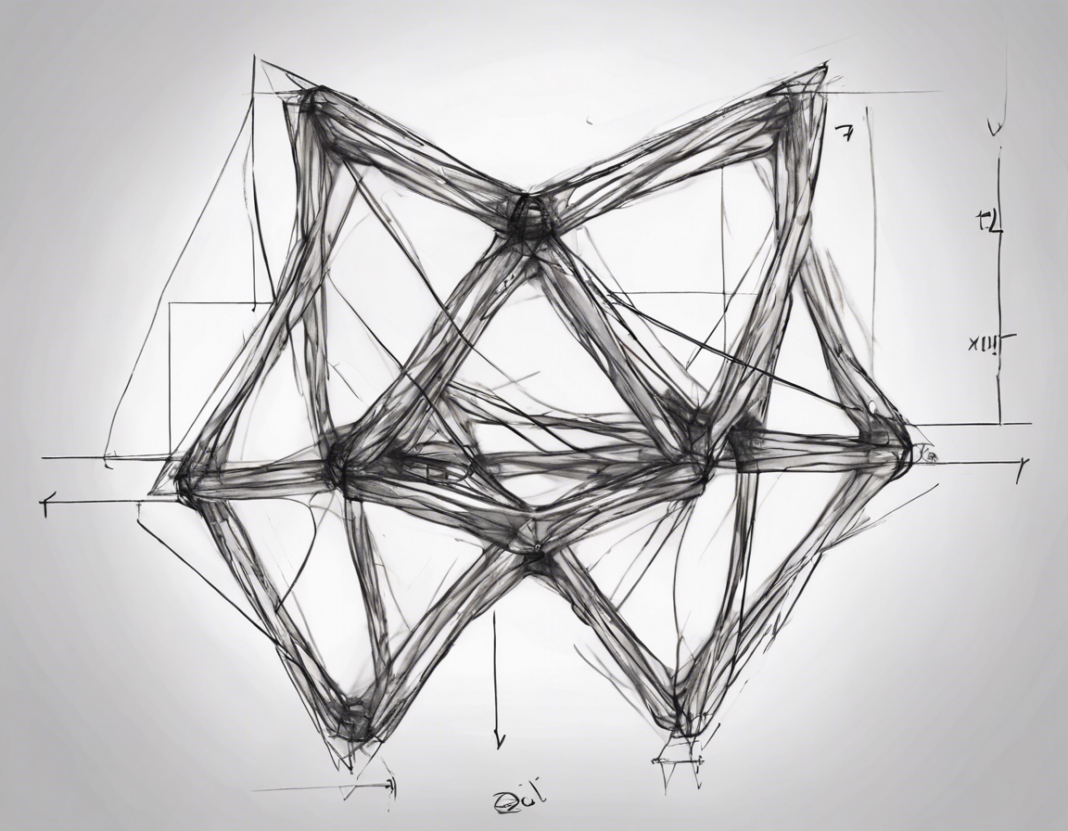When discussing tetrahedral voids in chemistry models, it’s essential to understand the fundamental concept of crystal structures, particularly in the context of solid-state chemistry. Crystal structures are arrangements of atoms or molecules in a highly ordered, repeating pattern, extending in all three dimensions. Within these structures, voids or spaces exist between the closely packed atoms or ions, which can be occupied by smaller atoms, ions, or molecules. Tetrahedral voids are one of the common types of voids found in crystal structures, particularly in compounds with tetrahedral coordination.
Crystal Structures and Tetrahedral Voids
At the heart of solid-state chemistry is the study of crystal structures, which are classified into different types based on the arrangement of atoms or ions. Common types of crystal structures include cubic, hexagonal, and tetragonal structures, each with unique properties and void types. Tetrahedral voids specifically refer to the spaces created when four spheres or atoms are arranged in a tetrahedral geometry, resembling a pyramid with a triangular base.
-
The tetrahedral void is defined by its proximity to four spheres, forming the vertices of a regular tetrahedron, a geometric solid with four equilateral triangular faces. In this configuration, the spheres are in close contact, creating a relatively small void space suitable for smaller atoms or ions to occupy.
-
In crystalline structures, the presence of tetrahedral voids influences the overall stability and packing efficiency of the material. These voids can be filled by various species, such as cation, anion, or molecule, depending on the crystal structure and chemical composition.
Factors Influencing Tetrahedral Voids
The formation and occupancy of tetrahedral voids in crystal structures are governed by several factors, including ionic radii, coordination numbers, and stoichiometry. Understanding these factors is crucial in predicting the arrangement of atoms or ions within a given crystal lattice.
-
Ionic Radii: The size of the ions involved plays a significant role in determining the void sizes and occupancy in a crystal structure. Tetrahedral coordination is favored when the ratio of cationic to anionic radii allows for a stable arrangement.
-
Coordination Numbers: The number of nearest neighbors surrounding a particular atom or ion, known as the coordination number, influences the type and size of voids present in the crystal lattice. Tetrahedral voids are commonly found in structures with tetrahedral coordination geometry.
-
Stoichiometry: The ratio of different types of atoms or ions in a compound affects the distribution of voids and the overall packing arrangement. Compounds with specific stoichiometries may exhibit a higher density of tetrahedral voids compared to other void types.
Applications of Tetrahedral Voids
Tetrahedral voids play a crucial role in various areas of chemistry and materials science, contributing to the properties and behavior of solid-state materials. Understanding the characteristics and behavior of tetrahedral voids can lead to significant insights into the structure-property relationships of crystalline substances.
-
Catalysis: Tetrahedral voids can act as active sites for catalytic reactions by accommodating reactant molecules or participating in the stabilization of intermediates. The size and accessibility of these voids can influence the catalytic activity of solid catalysts.
-
Ion Exchange: In ion exchange processes, tetrahedral voids can selectively capture and release ions based on their size, charge, and affinity for the void space. This property is leveraged in various applications, such as water purification and ion separation processes.
-
Optical Properties: The occupancy of tetrahedral voids by specific ions or molecules can alter the optical properties of materials, leading to coloration, fluorescence, or luminescence effects. This phenomenon is exploited in the design of optoelectronic devices and phosphors.
Synthesis and Manipulation of Tetrahedral Voids
Controlling the formation and occupancy of tetrahedral voids in crystal structures is essential for tailoring the properties of materials for specific applications. Various synthetic strategies and manipulation techniques can be employed to engineer the distribution and characteristics of tetrahedral voids in solid-state materials.
-
Solid-State Synthesis: Traditional methods of solid-state synthesis, such as high-temperature reactions and solid-state reactions, can lead to the formation of crystal structures with tetrahedral voids. Careful control of reaction conditions and stoichiometry is crucial for obtaining the desired void configurations.
-
Incorporation of Dopants: Introducing dopant ions or molecules during the synthesis process can modulate the occupancy of tetrahedral voids and alter the properties of the material. Dopants can occupy the void spaces and influence the electronic, magnetic, or optical behavior of the material.
-
Post-Synthetic Modifications: Techniques such as ion exchange, annealing, and chemical functionalization can be used to modify the occupancy of tetrahedral voids in pre-existing crystal structures. These methods offer flexibility in tailoring the properties of materials without altering the overall crystal framework.
FAQs
-
What distinguishes tetrahedral voids from other types of voids in crystal structures?
Tetrahedral voids are characterized by their arrangement around four spheres in a tetrahedral geometry, forming a space resembling a pyramid with a triangular base. This configuration is unique compared to other void types like octahedral or cubic voids. -
How do tetrahedral voids influence the mechanical properties of materials?
The presence of tetrahedral voids can affect the mechanical strength, hardness, and ductility of materials by introducing structural defects and altering the atomic arrangement. The occupancy of these voids by foreign species can also lead to changes in elasticity and fracture behavior. -
Can tetrahedral voids be visualized experimentally in crystal structures?
While direct visualization of tetrahedral voids at the atomic scale may be challenging, advanced techniques such as X-ray crystallography, electron microscopy, and computational modeling can provide insights into the distribution and occupancy of void spaces within crystals. -
Are tetrahedral voids present in all crystal structures?
Tetrahedral voids are commonly found in crystal structures with tetrahedral coordination geometry, where the arrangement of atoms or ions allows for the creation of these void spaces. Not all crystal structures exhibit tetrahedral voids, as the void type depends on the specific packing arrangement and atomic sizes. -
How do tetrahedral voids contribute to the thermal conductivity of materials?
The presence of tetrahedral voids can create phonon scattering centers within the crystal lattice, affecting the thermal conductivity of materials. The occupancy of void spaces by different species can alter the phonon transport pathways and influence thermal transport properties.
In conclusion, tetrahedral voids represent a fascinating aspect of solid-state chemistry, influencing the structural, electronic, and optical properties of materials. By understanding the formation, characteristics, and applications of tetrahedral voids, researchers and scientists can design and engineer novel materials with tailored functionalities for diverse technological applications.


